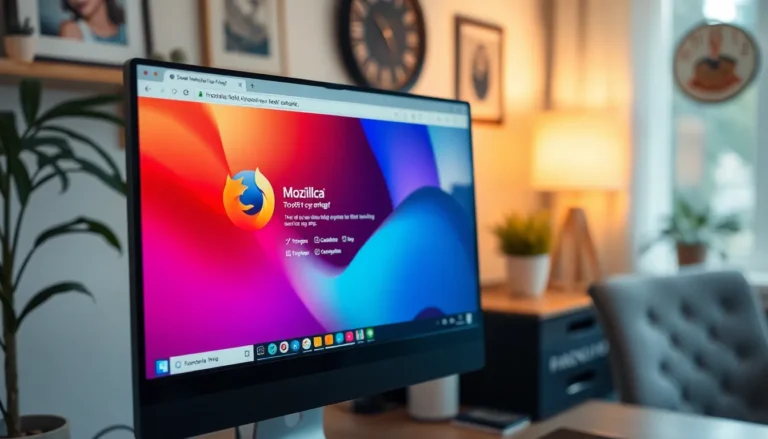Table of Contents
ToggleIn a world where students often tune out traditional lectures faster than a cat can knock over a glass, alternative teaching methods are stepping into the spotlight. These innovative approaches can turn the classroom into a vibrant hub of creativity and engagement. Why stick to the same old chalk-and-talk routine when you can spice things up with project-based learning or gamification?
Overview of Alternative Teaching Methods
Alternative teaching methods provide diverse approaches to education, addressing the limitations of traditional lectures. Project-based learning encourages students to engage in hands-on projects, fostering critical thinking and problem-solving skills. Through real-world applications, learners connect past knowledge with current experiences, enhancing retention.
Gamification transforms learning into a game-like environment. Elements such as points, badges, and challenges motivate students to participate and strive for achievements. This strategy not only increases engagement but also promotes a sense of accomplishment.
Flipped classrooms challenge conventional teaching dynamics. In this model, students review instructional materials at home, allowing class time for deeper discussions and collaborative activities. This approach shifts the teacher’s role to a facilitator, guiding exploration and personalized learning experiences.
Montessori methods emphasize self-directed learning. By providing a rich environment with various resources, educators allow students to pursue their interests at their own pace. This autonomy encourages independence and fosters a love for learning.
The inquiry-based method shifts the focus to student questions and curiosities. Educators guide students in exploring these inquiries, promoting research and analytical skills. This process cultivates a learning atmosphere where curiosity thrives.
Cooperative learning enhances collaboration among peers. In this approach, students work in small groups to achieve shared educational goals. Interaction among team members encourages communication skills and deeper understanding through peer teaching.
Each of these alternative methods contributes unique benefits, demonstrating that education can take many forms. They promote active engagement, critical thinking, and collaboration, reinventing the learning experience for students.
Key Types of Alternative Teaching Methods


Alternative teaching methods offer unique approaches that engage students in varied and effective ways. Each method enhances learning experiences and fosters critical skills.
Project-Based Learning
Project-based learning emphasizes real-world tasks, where students work on projects that relate to their interests. This method encourages critical thinking as students create solutions to authentic problems. Collaboration plays a key role, allowing students to share ideas and support each other’s learning. Assessments in project-based learning often reflect the complexity of the projects, ensuring a deeper understanding of the subject matter. Teachers act as facilitators, guiding students while promoting inquiry and exploration.
Inquiry-Based Learning
Inquiry-based learning centers on student questions, sparking curiosity and discovery. In this approach, learners actively seek answers through research and investigation. The process fosters analytical thinking, as students develop skills to evaluate sources and synthesize information. Educators pose thought-provoking questions that stimulate discussion and exploration, creating an interactive classroom environment. This method nurtures independent thinking, empowering students to take ownership of their educational journey.
Flipped Classroom
Flipped classrooms invert the traditional teaching model, placing content delivery outside the classroom. Students review learning materials at home, such as videos or readings, which prepares them for in-class activities. During class, students engage in discussions, problem-solving, or collaborative projects that deepen understanding. This strategy encourages active participation and allows educators to provide more personalized support. Flexibility in pacing allows students to absorb information fully, leading to better retention and mastery of the subject.
Benefits of Alternative Teaching Methods
Alternative teaching methods offer several key benefits that enhance the learning experience. They promote deeper engagement and collaboration among students.
Enhanced Student Engagement
Active participation defines enhanced engagement. Students become more involved when learning is interactive and hands-on. Methods like gamification often ignite students’ interest and enthusiasm, motivating them to explore subjects actively. Project-based learning allows students to immerse themselves in real-world challenges, making education dynamic and relevant. Additionally, inquiry-based learning encourages curiosity, prompting students to ask questions and pursue knowledge. These approaches create an inviting environment that encourages exploration, fostering a love of learning.
Development of Critical Thinking Skills
Developing critical thinking skills occurs naturally through alternative teaching methods. Project-based learning demands that students analyze situations, evaluate solutions, and apply knowledge to solve problems. Inquiry-based approaches push learners to investigate topics and make connections between concepts. Students often engage in discussions and debates, honing their ability to articulate thoughts and challenge assumptions. This active engagement promotes analytical reasoning and enhances decision-making abilities. Critical thinking becomes a vital part of the educational journey, equipping students for real-world scenarios.
Flexibility in Learning
Flexibility in learning environments enhances student success. Alternative teaching methods enable tailored approaches that accommodate diverse learning styles and paces. Students thrive when given choices in topics, activities, and assessments. Flipped classrooms exemplify this flexibility by allowing students to control the learning process, driving engagement in class activities. Furthermore, cooperative learning fosters collaboration while respecting individual contributions. Such flexibility cultivates a personalized learning experience, ultimately enhancing retention and mastery.
Challenges of Implementing Alternative Teaching Methods
Implementing alternative teaching methods presents various challenges.
Resistance to Change
Resistance from educators often arises when introducing new methods. Many educators are accustomed to traditional methods and hesitate to adopt unfamiliar approaches. Stakeholders including parents and school administrators may also resist changes, fearing potential disruptions. Successful implementation requires thorough training and ongoing support for teachers, fostering confidence in new methods. Engaging all stakeholders in discussions about the benefits of these methods can also alleviate concerns and promote acceptance. Ultimately, addressing these obstacles leads to a smoother transition to innovative teaching strategies.
Resource Limitations
Limited resources significantly impact the adoption of alternative teaching methods. Schools often face budget constraints that reduce access to necessary materials or training opportunities. Software and technology required for methods like gamification or flipped classrooms may seem unaffordable for some institutions. Additionally, smaller class sizes or specialized training can enhance the effectiveness of these approaches but may not be feasible for every school. Seeking partnerships with local organizations or securing grants can help overcome financial barriers. Resource allocation directly influences the ability to implement alternative teaching methods effectively.





